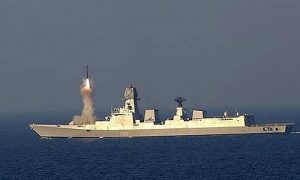Context: The teams of rescuers from the National Disaster Response Force (NDRF) are now a familiar sight at most of the natural calamities or man-made disasters in India.
Origins of National Disaster Response Force (NDRF)
- The Parliament passed the National Disaster Management Act in 2005 as a step towards determining responsibility and accountability for disaster response.
- The law laid down a legal framework for disaster response at the national, state and district level.
- The Act paved way for establishing Disaster Management Authorities at the national, state and district levels.
- The law also paved the way for setting up the National Disaster Response and Mitigation Funds, and formation of the National Disaster Response Force (NDRF).
Organization and Structure of NDRF
- The National Disaster Management Authority is chaired by the Prime Minister.
- The NDRF was raised in 2006, initially with eight battalions, and now has 12 spread across the country.
- Each battalion caters to particular states as their areas of responsibility.
- NDRF functions under the purview of the Ministry of Home Affairs (MHA) and is headed by a Director General.
- The NDRF gets personnel and officers on deputation from the CAPF for a period of seven years.
Vision of NDRF
- NDRF is to emerge as the most visible and vibrant multi-disciplinary, multi-skilled, high-tech force capable to deal with all types of natural as well as manmade disasters and to mitigate the effects of disasters.
Role and Mandate of NDRF
- Specialized response during disasters
- Proactive deployment during impending disaster situations
- Acquire and continually upgrade its training and skills
- Liaison, Reconnaissance, Rehearsals and Mock Drills
- Impart basic and operational level training to State Response Forces (Police, Civil Defence and Home Guards)
- Community Capacity Building Programme
- Organize Public Awareness Campaigns
Source: The Indian Express


